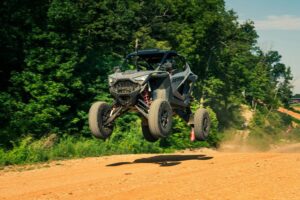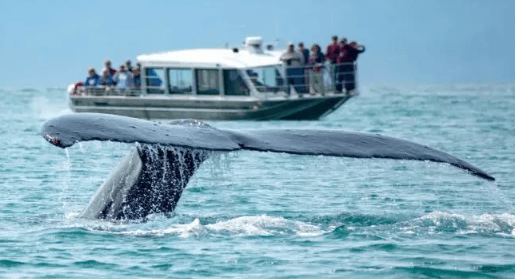Are you planning your first whale watching adventure in Juneau? If so, you’re in for an amazing experience!
Seeing these beautiful creatures in their natural habitat is something that will stay with you forever.
But before you head out on the water, there are some important steps to take to ensure a successful trip.
With the right preparation, you can make sure that your whale watching adventure lives up to all of your expectations!
In this article, we’ll discuss how to plan and prepare for your Juneau whale watching excursion.
We’ll cover topics such as researching the best tour operators, choosing the right time of year, preparing for the weather, packing the right gear, and learning about whale behavior, all to help you prepare for a whale watching adventure.
So get ready – it’s time to embark on a once-in-a-lifetime journey!
Research the Best Tour Operators
To make sure you have the best experience, it’s important to do your research and find the top tour operators. Look for reviews from past customers who have been on whale watching tours in Juneau, and check availability of the operators you are looking into.
Contact them with any questions or concerns that you may have so that you can be sure to choose a reliable company. Make sure they offer up-to-date safety equipment and adhere to all local regulations. Ask about staff qualifications, boat size, crew size, and experience level of tour guides – these are all important factors when selecting a tour operator for your whale watching adventure in Juneau.
With the right research and preparation, you can be confident that your trip will be enjoyable and memorable!
Transitioning into the right time of year for whale watching, it’s important to know which months provide optimal conditions for spotting whales.
Choose the Right Time of Year
The best time to see whales in the area is during the summer months, so plan out when you’ll be visiting accordingly! Make sure to take seasonal patterns into consideration when selecting a date.
The waters can be choppy and unpredictable in the winter, making it difficult for boat safety; however, you may still spot some whales during this season.
In the summertime, pods of whales tend to frequent Juneau’s waters more often than any other time of year. This makes it much easier for whale watchers to catch sight of them.
Be mindful that certain times are better than others for viewing these majestic creatures. The peak whale watching season typically occurs between May and September – although you may spot some whales earlier or later depending on their migration patterns.
Make sure to research your desired tour operator’s schedule before booking the trip as there will likely be fluctuations depending on the time of year.
Prepare for the Weather
No matter when you go, it’s important to be prepared for the weather in Juneau. Temperatures range from an average low of 36°F in winter to an average high of 65°F in summer – a 29°F difference!
To make sure your whale watching adventure is comfortable and enjoyable, here are a few things you should keep in mind:
1. Check the tides before you plan your trip so that you know what time of day will give you the best chance to see whales.
2. Plan meals that can be enjoyed outdoors no matter what the weather is like.
3. Pack layers of clothing, including warm and waterproof options, as well as hats, scarves and gloves to keep yourself warm and dry during your outing.
Be sure to check the forecast ahead of time so that you can prepare accordingly; if there’s rain or strong winds predicted on your whale watching day, consider postponing or rescheduling your adventure until conditions improve for a more enjoyable experience!
With proper planning and preparation, you’ll be ready for whatever Mother Nature throws at you while out on the sea in Juneau.
Pack the Right Gear
Make sure you pack the right gear so you can stay comfortable and enjoy your outing no matter what nature throws at you. Choose clothing that is appropriate for the weather conditions, such as a waterproof windbreaker or a raincoat. Pack layers in case it gets cold, and remember to bring along a hat, gloves, and warm socks if necessary.
Additionally, don’t forget to bring binoculars with you on your whale watching adventure! Binoculars are essential for getting a closer look at any whales you may spot during your outing. Having them with you will help ensure that you get an up-close view of the majestic creatures in their natural habitat.
Your Juneau whale watching adventure will be even more enjoyable if you come prepared with the right gear. Be sure to choose clothing that is suitable for the weather conditions and don’t forget to bring along binoculars too! With the proper preparation, you can have an incredible experience out on the water seeing some of nature’s most beautiful creatures up close.
Now that we’ve discussed packing the right gear for your Juneau whale watching outing, let’s talk about knowing where to look once out on the water!
Know Where to Look
Once you’re out on the water, keep your eyes peeled for whales – they can dive underwater for up to 20 minutes at a time!
Choosing the right location and planning a route is key to making sure you have the best chance of spotting whales. Do some research online beforehand about where other people have seen whales in Juneau, and be sure to check out whale watching forums or ask locals to get more specific tips about where to look. You want to make sure you’re in an area of open ocean that has plenty of food for whales.
Aim for areas with cold, nutrient-rich waters like near glaciers or along deep channels between islands. It helps if you know what kind of whale species are in the area so you know exactly what kind of habitats they prefer.
You also need to think carefully about when you go – timing is everything! Wildlife viewing can be unpredictable, but certain times of year typically offer better odds than others, especially during migration and breeding seasons when animals will congregate in larger numbers.
Doing some research ahead of your trip can help ensure that your whale watching adventure is as successful as possible!
Learn About Whale Behavior
Now that you know where to look to spot whales during your Juneau whale watching adventure, you should also learn about their behavior.
In particular, understanding how whales communicate and their feeding habits can help you appreciate this experience even more.
Whale communication occurs through a wide range of vocalizations, ranging from clicks and whistles to growls and singing songs. Whales use these sounds for different purposes such as navigating in the water, maintaining social relationships with other whales, or communicating distress signals when they’re injured or in danger.
Additionally, learning about the feeding habits of whales is important because it’ll help you understand why they come to certain areas of the ocean at certain times of year. For example, humpback whales often travel thousands of miles each year to feed in Arctic waters during summer months before migrating south for the winter.
With this knowledge, you can better anticipate when and where these majestic creatures are likely to appear during your whale watching trip!
Conclusion
You’re almost ready for your Juneau whale watching adventure!
Researching the best tour operators, choosing the right time of year, and preparing for the weather are all key to having a successful trip.
Don’t forget to pack all the necessary gear so you can make the most of your experience.
And remember, whales don’t always show up when we expect them – that’s part of their mystery.
But if you know where to look and what signs to watch out for, you’ll be in with a chance of spotting some amazing creatures.
Who knows? You might even uncover new evidence that supports an existing theory about whale behavior!
The possibilities are endless – get out there and explore!










